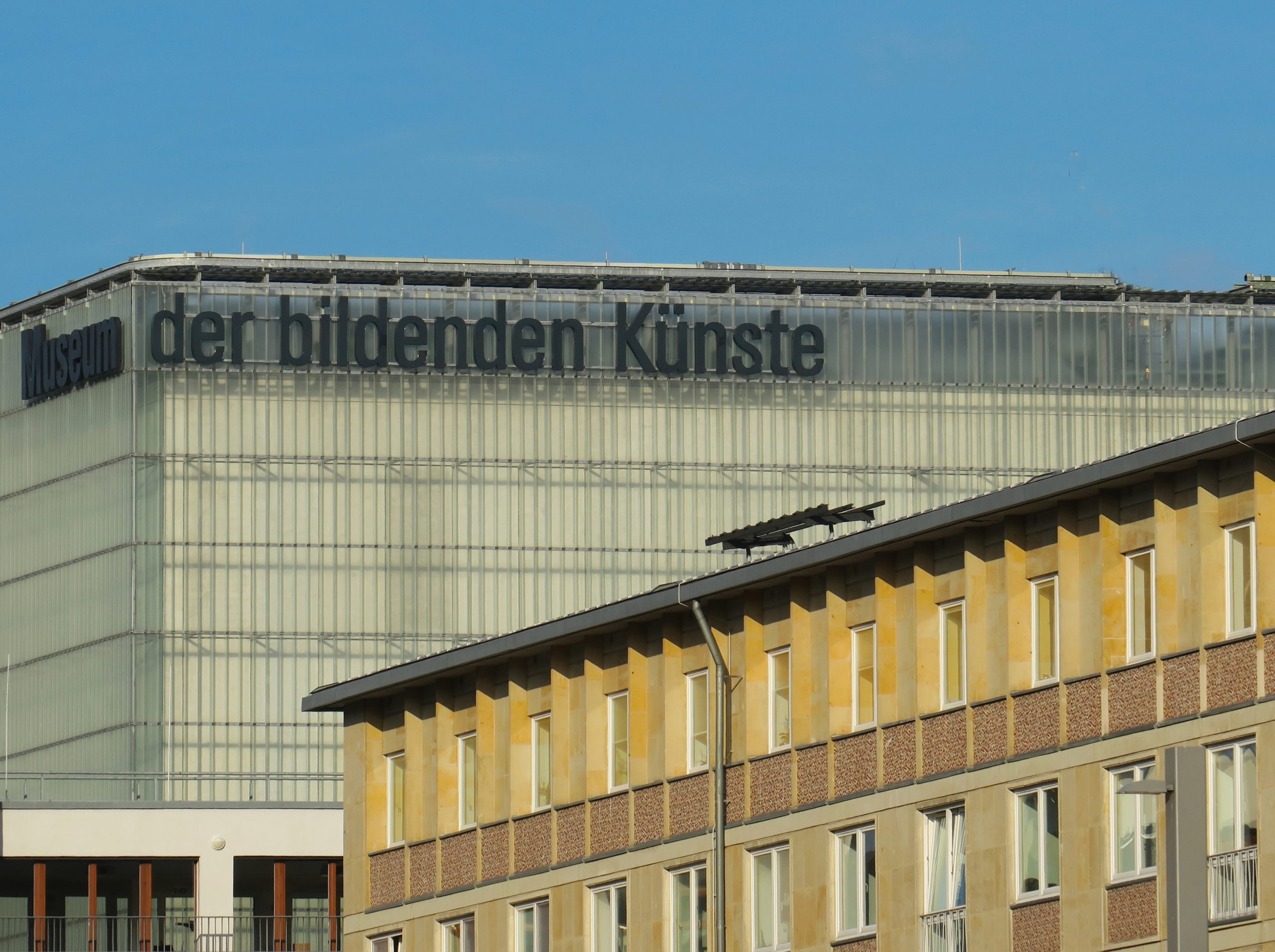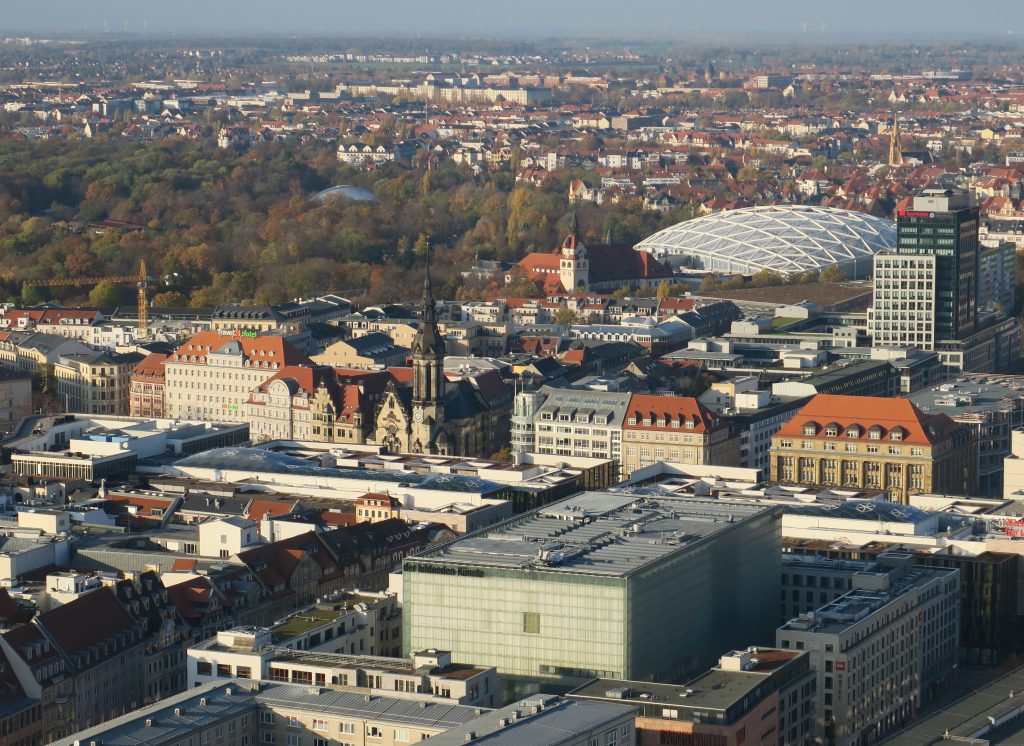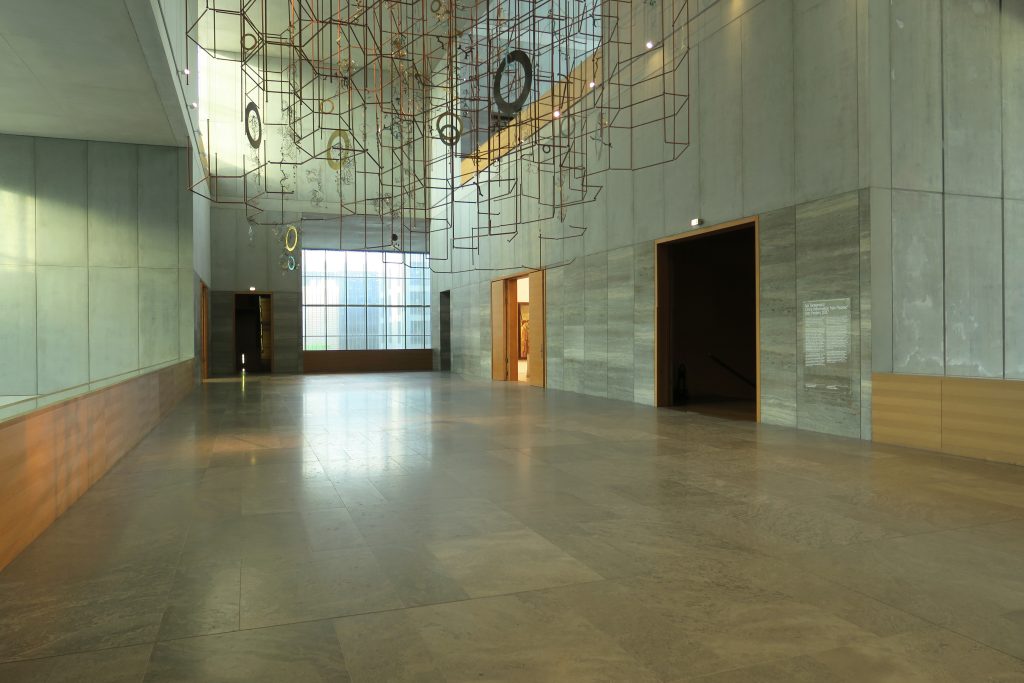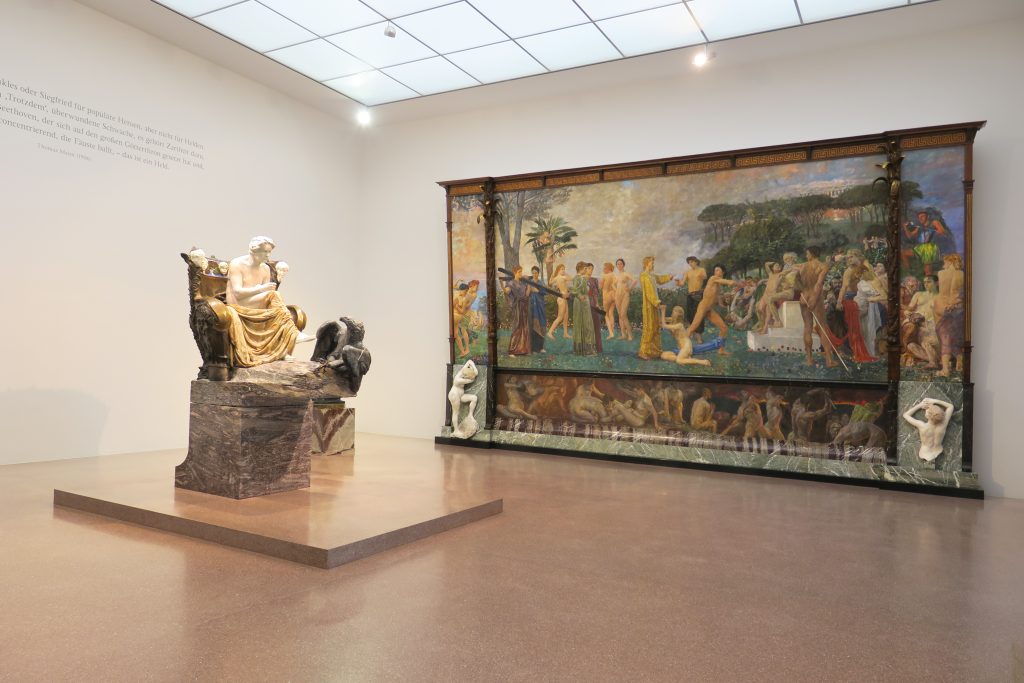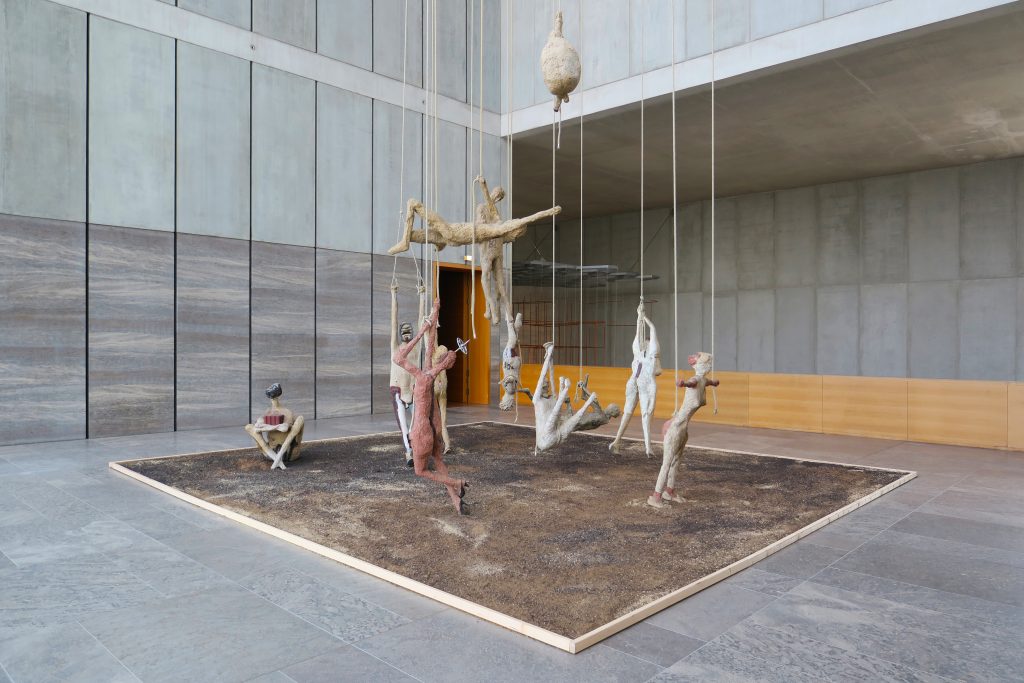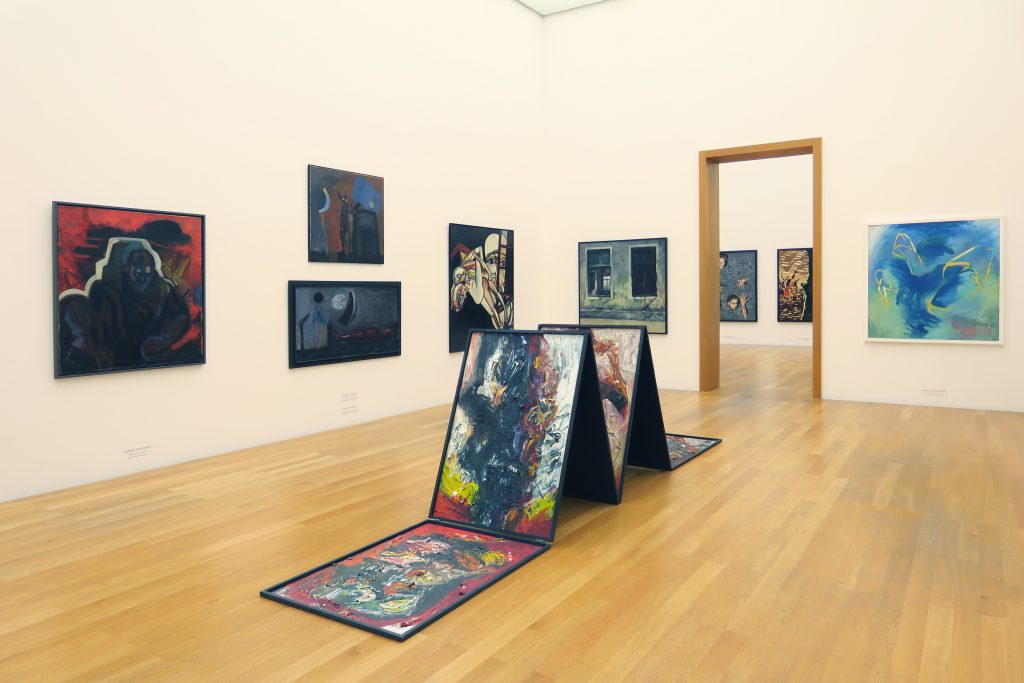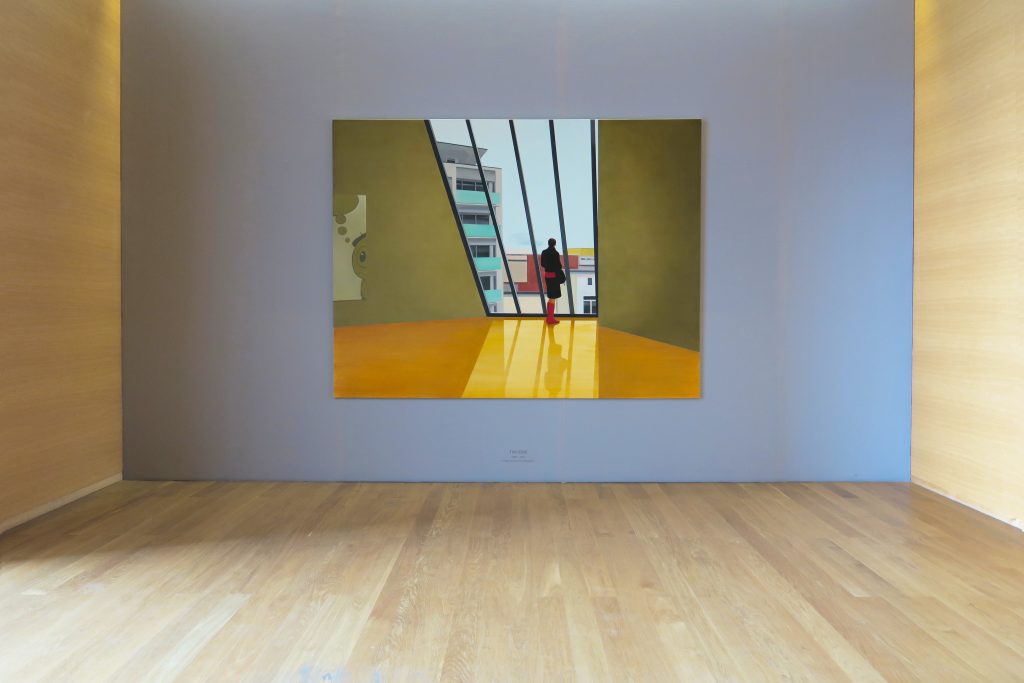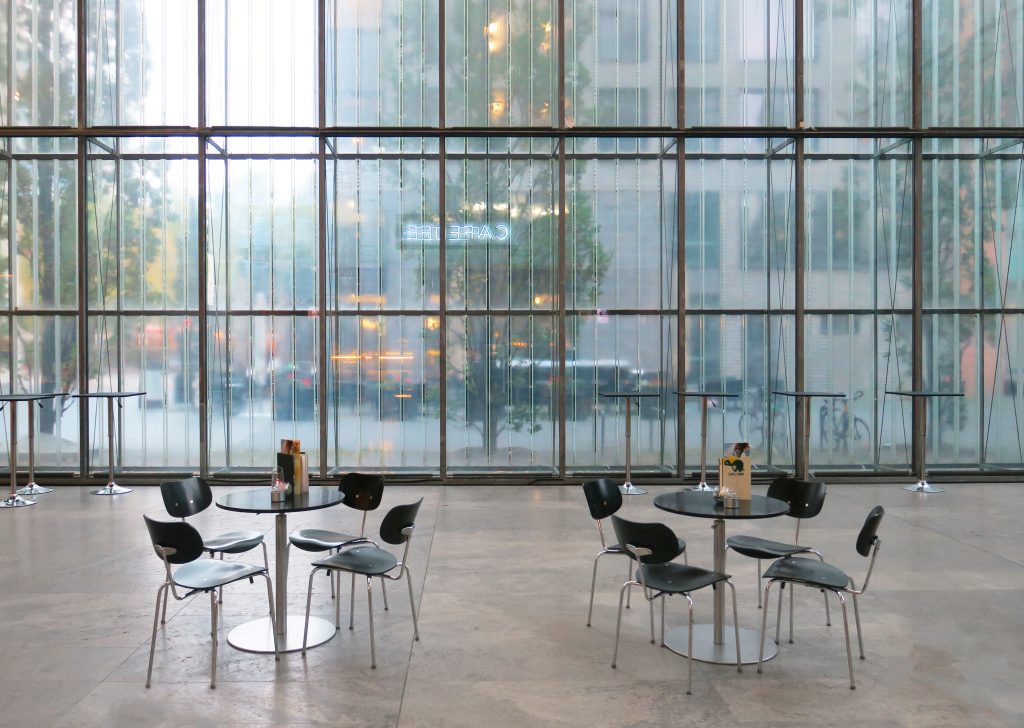The Museum der bildenden Künste (Museum of Fine Arts Leipzig) collection started being assembled back in 1848, as a sort of grass roots initiative by some culturally inclined Leipzig citizens. Gradually, through the incorporations of several important private German collections, the institution became a respectable cultural institution, and a quite resilient one. After surviving Nazi art confiscation, British bombings, and an itinerant location phase in the post war, the MdbK, as it is known, was finally given a permanent, world class, state of the art new home.
The new structure, designed by Berlin architects Hufnagel / Pütz / Rafaelian, is a 118 feet high glass cube standing where the former Sachsenplatz once was, smackdab in the middle of Leipzig’s historic center, creating a dynamic contrast of old and new. Inside, the sprawling galleries and hallways are organized in a balanced play of volume and void, activated by the light filtering in through the glass walls. Though most certainly a contemporary space, its simple geometry and neutral materials create a welcoming setting for both the historic and modern pieces from the collection.
Today, the MdbK collection has become a comprehensive one, ranging from European masters of the 15th and 16th centuries to French Impressionism and modern and contemporary works, including the Leipzig New School. Beyond that, the museum also houses a major art library with over 100,000 items open to the public and considered one of the most important ones in Europe.
By Paul Clemence

